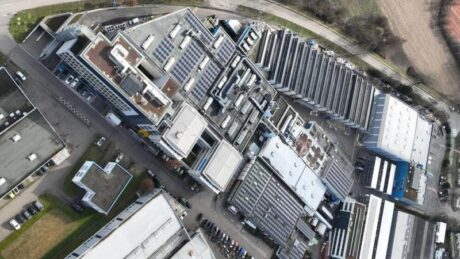A New Way to Electrify: Heating Buildings with Ice watch now
The growing number of clean energy careers in New York State is attracting individuals with diverse skills and interests.
The growing number of clean energy careers in New York State is attracting individuals with diverse skills and interests. Jobs range from building renewable energy systems, designing energy-efficient homes and buildings, as well as supporting the adoption of electric vehicles. Whether you are heading to college, entering the workforce, or planning a career change, a clean energy career could help you energize your future. Plus, there are options for free…
Regional Clean Energy Hubs
Discover the wealth of information at your Regional Clean Energy Hub! You can explore electric vehicle options, solar incentives, and exciting job training opportunities. Your Hub is a team of knowledgeable, community-based organizations from your region of the State. They have experience with energy efficiency, workforce and economic development, education, health, and housing. Find your Clean Energy Hub here.
Struggling to keep your home cool during the hot summer months?
Struggling to keep your home cool during the hot summer months? Without proper cooling, the summer heat can be unbearable, making your home uncomfortable and even unsafe. The Home Energy Assistance Program (HEAP) is here to help eligible New Yorkers! HEAP offers a cooling assistance benefit for the purchase and installation of an air conditioner or fan to keep your home comfortably cool. Learn More
Governor Kathy Hochul released the state’s Extreme Heat Action Plan
Today, Governor Kathy Hochul released the state's Extreme Heat Action Plan aimed at addressing the health risks of extreme heat on New Yorkers. The plan, developed by the NYS Department of Environmental Conservation and NYSERDA, aims to coordinate interagency efforts, mitigate local impacts of extreme heat events, and prioritize state investments in disadvantaged communities who are on the frontlines of heat exposure. The plan also identifies 49 state-led actions and…
Increase in electrical load in the grid through a systematic heat pump strategy in Germany
Author: Wolfgang Feist in January 2024 1. Introduction and problem definition As far as the energy transition in Germany is concerned, there is widespread agreement among experts that the heat supply for space heating and hot water should no longer be covered by fossil fuels in the long term. However, which heat generators should be used instead is still the subject of heated debate. The alternatives under discussion include the…
New York City has been named as one of the most energy efficient cities in the USA
New York City has been named as one of the most energy efficient cities in the USA according to ENERGYSTARTopCities! NYC ranked third overall, but first by floor area and second by emissions prevented from buildings. It’s all a part of our efforts to create a more sustainable future. See the full list:
Introducing EasyPH (beta)
It is introducing EasyPH (beta)—the new tool built on PHPP (10.6) that simplifies certification for single-family homes! With reduced inputs and helpful guidelines, it makes energy balance calculations easier than ever. Included in the PHPP 10.6 master bundle (beta version), it's initially available in English only. Ready to give it a try? Visit our page to learn more! Learn More
European Sustainable Energy (EUSEW) Awards in the Innovation category.
OutPHit has just been confirmed as one of three finalists shortlisted for the 2024 European Sustainable Energy (EUSEW) Awards in the Innovation category. Through the project, 25 case studies across five European countries demonstrate how high-performance, deep retrofits to the EnerPHit standard can be made faster and more cost-effective. The EUSEW Awards recognise outstanding projects for their efforts in Energy Efficiency and renewables. A total of nine finalists in the categories…
This is in light of NYC Local Law 97
In a recent case study, Hines shares how their interest in decarbonization has led to 555 Greenwich being among one of the first high-performance buildings to achieve a larger goal of reducing building carbon emissions. This is in light of NYC Local Law 97, which requires most large buildings to reduce their greenhouse emissions with the plan to ultimately eliminate them by 2050. As part of the team that…
Press Release – Energy retrofits work. Really well.
27th International Passive House Conference presents solutions for renovations & much more Darmstadt, Germany /Innsbruck, Austria. "It's the existing buildings that matter!" From the start of the 27th International Passive House Conference in Innsbruck, the Passive House The institute emphasized the importance of highly energy-efficient renovations for climate protection. Diana Ürge-Vorsatz from the IPCC also called for renovations and new builds to focus exclusively on high energy efficiency. The international…
Expansion of photovoltaic (PV)
We're proud to announce the expansion of our photovoltaic (PV) systems across Schöck's European production facilities, underscoring our commitment to sustainability. As we strive for climate neutrality by 2035, we're set to increase our installed capacity by approximately 59% by 2025 — a significant step in reducing CO2 emissions and fossil resource consumption. 🌱 Learn More





































